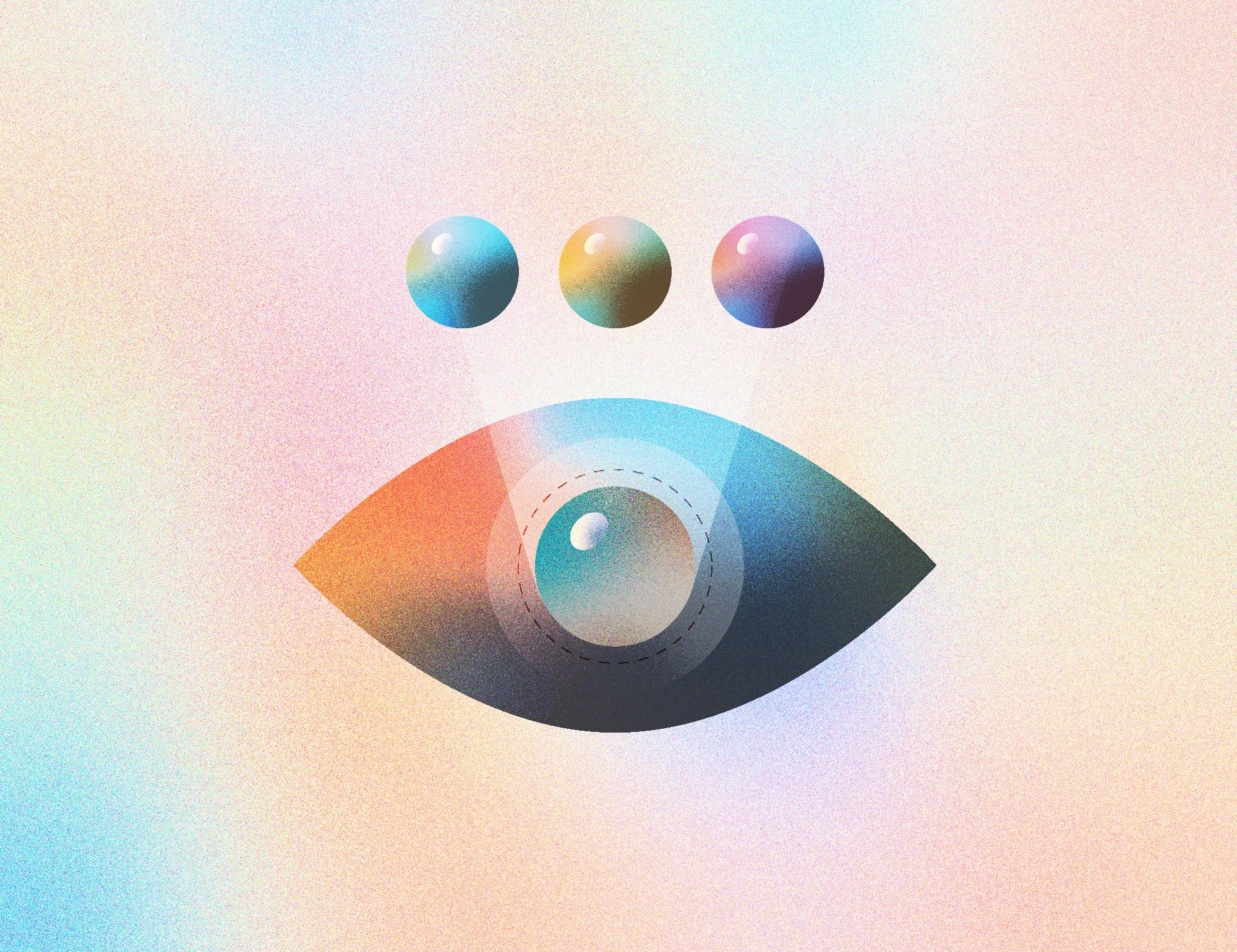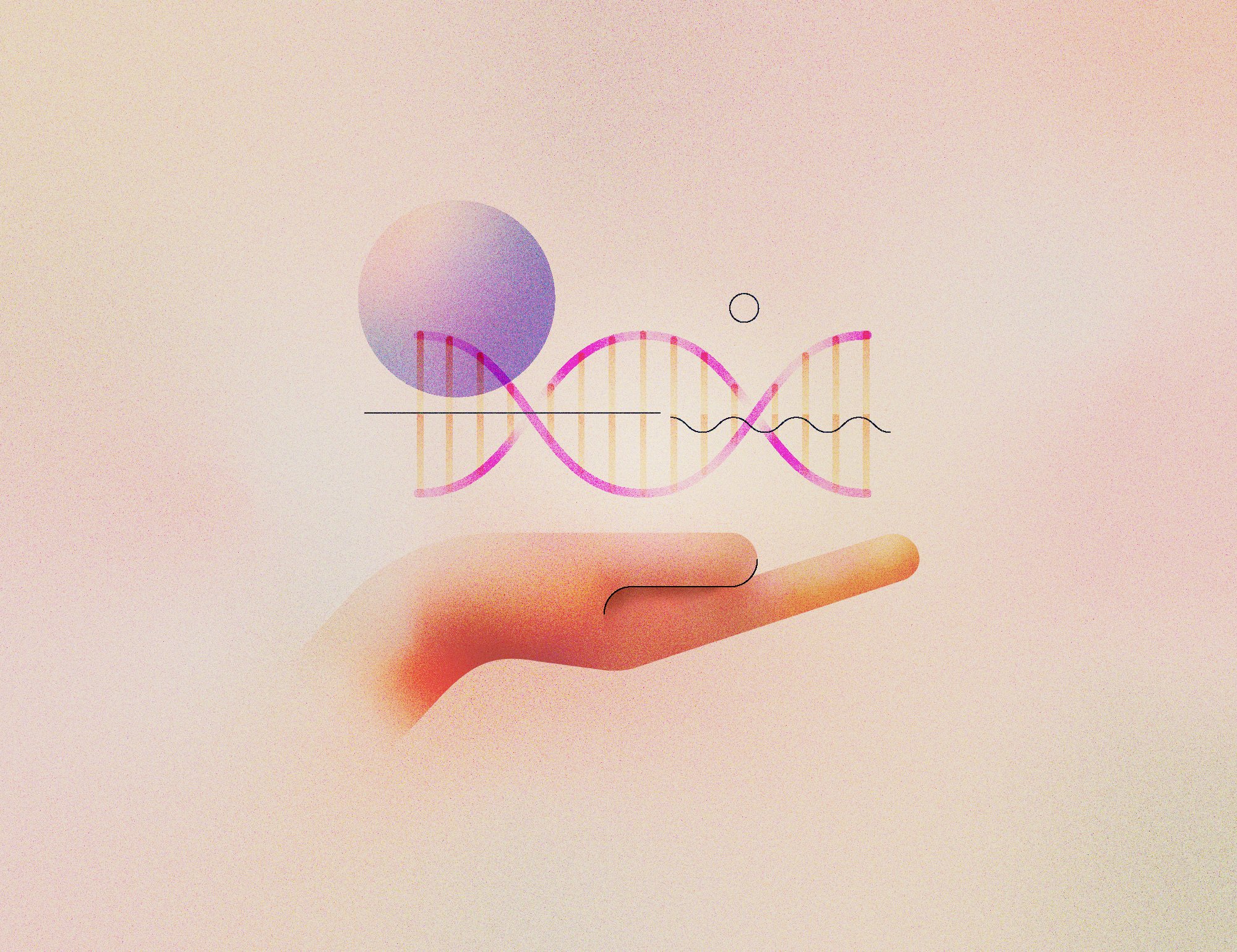Anatolii Babii
Anatolii Babii is a multidisciplinary digital artist, iconographer, and pattern designer from Kyiv, Ukraine. He specializes in vector and raster graphics with a focus on human connection with future technologies, expressing ideas through abstract geometric shapes and rich textured surfaces.
Hi Anatolii! Tell us about yourself - how did you get to where you are today and when did you first become interested in art and design?
Hi! You know, my first interest in art came when I had a ZX Spectrum computer during my childhood. It was 1990, and it looked like a motherboard in a DIY plastic cover connected to an analog TV with a Soviet cassette player as an external drive.
Any game would take at least 5 minutes to load, accompanied by the sound of a 1-bit (so to speak) melody, but it was incredible for me at the time– just like a spaceship! This machine took you into the realm of computer magic, and using the BASIC language you could write your own programs, draw, and even make games.
Later on, as an adult, I was lucky enough to attend a computer course where I discovered the power of Macromedia Flash. Back then it was a leading technology for animators/designers with a lot of promise.
I was then fond of photography and thought Flash was an ideal tool to make a trendy gallery for my images. Obviously, the tool wasn't perfect (I didn't know about scripts yet, so imagine updating a site with frame animations, quite a challenge), but thanks to the site I was hired as a graphic designer for creating media content at a local creative agency.
From then on, I fully immersed myself in the world of digital design.
How would you describe your aesthetic and how has your design style changed over time?
Well, I don’t stick to any fixed style, as I love to experiment with different formats. For instance, I’m now heavily interested in exploring a generative approach for shaping graphics and visuals using algorithms. But if I were to define the direction in which I'm striving all the time, I would call it retro-future Bauhaus aesthetics.
I always preferred minimalistic visuals and pure geometrics at least, probably thanks to my 8-bit childhood ;)
In addition, my passion for synth music, love of Mid-Century covers and posters, and the constant reading of books in the sci-fi genre had a strong influence on the works and projects I have been lucky enough to work on.





How did you discover Noun Project and what led you to start designing icons?
About 10 years ago I was working a lot on generating content for stock platforms, shooting different concepts and fine-tuning them with Photoshop.
By that time I was tired of this routine and wanted to find something new, when a friend of mine with whom I was working, started drawing graphics in the emerging “flat design” style.
I liked the style so much that I gave up the camera and began to learn Illustrator and try to draw various shapes and icons. I've always been attracted to visual in-game interfaces and technical aesthetics, and I thought it would be interesting to try it out.
I discovered Noun Project much later. By that time I had worked on a couple of collections and drawn a few thousand icons. I like Noun Project’s approach to content distribution.
You’ve recently launched a collection of NFT artworks to raise funds to support the people of Ukraine – can you tell us more about this project?
When the war happened, everybody was asking themselves how can I help my country, and where would my knowledge and skills be most effective.
At this time, I was working in a small team on software that can generate graphics/patterns using vector shapes as base modules to which the program applies various functions and algorithms.
I had an idea to use the program to generate a collection of images called “Colours of Freedom” that is dedicated to Ukraine, and release this collection on the OpenSea to raise funds that will go to support the Ukrainian people.
The NFT format is ideally suited as a tool for this kind of idea because when you buy a token, the amount is transferred to the wallet of the official crypto-fund of Ukraine. I.e. it is possible to track down the route of the transaction– it’s transparent and without unnecessary bureaucracy.
Moreover, a person not only donates money for a good cause but also gets something in addition to their collection, some kind of symbol of solidarity and care for our country in this difficult time.
What’s your creative process like and how do you approach creative collaboration?
First of all, I have to be hooked on the subject. I start imagining what it might look like, to come up with a concept and try to visualize the image in my head. I rarely do sketches and tend to capture the image right away in Illustrator.
Once I start drawing an illustration or an icon, at first I get a rough shape, which is then detailed. It's kind of like building a sculpture, where the excess parts of the dummy are cut away making the shape appear.
I have a complicated relationship with creative collaboration. I work more freely on my own, otherwise, I get worried about something turning out differently from the picture I imagined. But I keep trying to deal with this problem of excessive perfectionism. Everything in life can't work out the way you want it to, so you just have to accept that.




What’s been one of your favorite projects to work on so far and why?
I think Futuro Icons is my favorite because it is the most recognizable work and has greatly influenced my career.
This is a complex project that took me about 2 years to develop, during which time I gradually refined the style of the collection as my icon design skills evolved.
The constant practice of drawing concepts within the strict boundaries of style has taught me to find balance in composition when constructing a visual using lines, points, and the space between them.
Now, looking at the entire collection of 1,200 icons, though, I can say that about half of the icons I would like to redesign and find a more unique and harmonious look. I hope that someday I can find the time and energy to do this ;)
Where do you find creative inspiration?
My greatest influence and inspiration comes from sсi-fi books and computer games. It's an incredible opportunity to dive into a different world and look at life through the eyes of another character to discover something new for myself and find inspiration for my creativity.
But I also should mention music, which always gets me in the mood and helps me tremendously in my work and, indeed, throughout my whole life.
What advice would you give to artists and designers just starting out?
Treat the learning process as a game and try not to get upset if you have struggled at the beginning. In games, too, you can't immediately figure out how it all works, but as you spend time, your character grows, you develop new abilities, and gain a deeper understanding of the world where you can put your skills to use.
Good luck, guys!
Thank you for sharing with us Anatolii! To view more of Anatolii’s work visit his website, follow him on Instagram, and check out his icons on Noun Project.
Anatolii was nominated by Noun Project. All art courtesy of Anatolii Babii.








